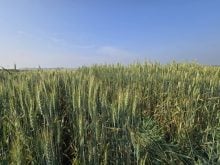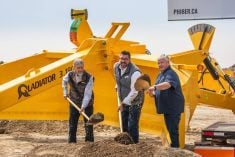It is an abbreviation for Light Detection and Ranging, and it was developed originally right here in Canada.
Hank Venema of Strategic Systems Engineering in Winnipeg says it’s a complex thing, but boiled down it involves flying an airplane over a landscape, shooting a laser at that landscape, and then measuring it when it bounces back.
“Based on very accurate information regarding the aircraft’s speed and altitude, you can deduce the elevation of the land surface the laser reflects off of within centimetres,” Venema told the Co-operator.
Read Also

Regenerative practices meet Indigenous knowledge on the Prairies
What do traditional Indigenous agricultural practices and regenerative agriculture have in common? Quite a lot it turns out.
In some ways it’s similar to other means of surveying and detection such as radar and sonar. Sonar is an ancient example and there are some animals, such as bats and whales, that are the masters of sonar. A hunting bat squawks a very high call and then listens for the echo. It could be a tasty moth in which case the bat focuses the calls and zeros in on dinner. Radar uses radio waves and the dish antenna catches the reflection that bounces back.
LiDAR uses laser pulses instead. They travel at the speed of light and here’s how it works.
An airplane with the right equipment flies over the piece of land scheduled for mapping. There are three vital pieces of equipment involved here. The first is the global positioning system (GPS) that maps the exact position of the airplane. The plane has a rangefinder that emits laser pulses at the ground and records what bounces back, very much like that bat picking up the echo off that moth. Then, because a real airplane can’t fly a perfect path, there is an inertial measurement unit (IMU) on board that records the plane’s roll, pitch and yaw motions.
The scanner emits a series of pulses in a fan shape that sweeps the land below as the plane flies over then it picks up the returning pulses. It records the length of time it took for each pulse to leave and return and this is washed through the computer to correct for the actual path of the plane.
The result is a highly accurate map of the surface topography, whether it’s ground, forest canopy or buildings. Considering that it’s measuring the time differences of a light-speed laser pulse caused by elevation differences of mere centimetres it shows just how fine the equipment is.
“And this is the extraordinary thing,” Venema said. “It’s such an efficient way to displace classical surveying methods so instead of running a transect and getting elevations in a straight line you get elevations across a continuous surface. It’s really a dramatic change in how surveying is done.”














